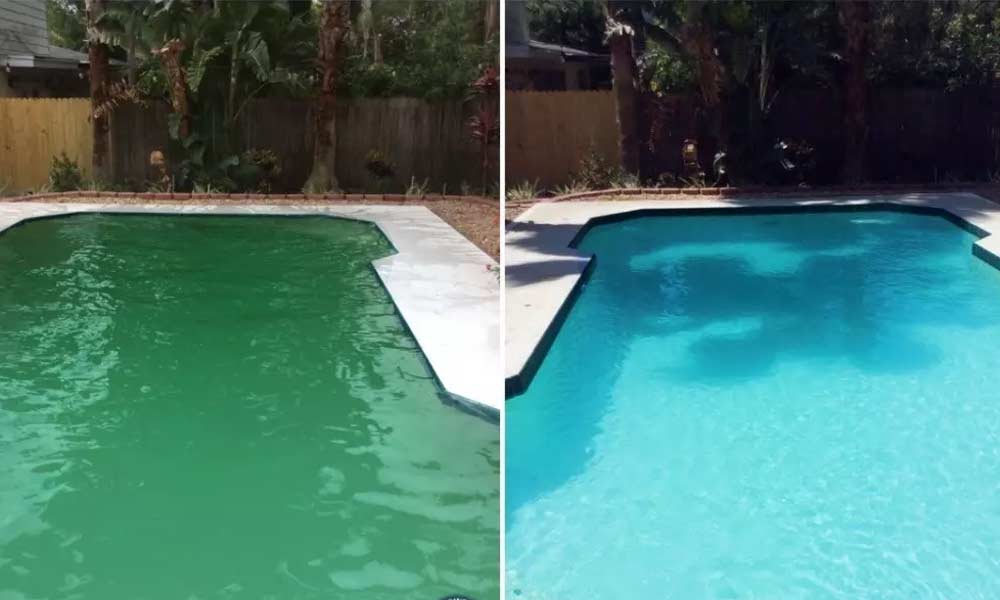Under senare år har problemet med algtillväxt i olika vattenmiljöer blivit ett växande bekymmer för både husägare och företag. Alger orsakar inte bara estetiska problem och förvandlar klart vatten till grumligt grönt, utan de kan också skada vattenlevande organismer och påverka vattenkvaliteten. För att bekämpa detta problem vänder sig många till algmedel, men att veta när och hur man använder dem är avgörande för effektiv algbekämpning. I den här artikeln ska vi utforska vikten av...Algdödande medel och ge viktiga riktlinjer för deras korrekta användning.
Algproblemet:
Alger är enkla, växtliknande organismer som trivs i vattendrag som dammar, sjöar, simbassänger och till och med akvarier. De förökar sig snabbt, särskilt i varma, soliga förhållanden, vilket gör vattnet grönt och minskar dess klarhet. Algblomningar kan också minska syrenivåerna i vattnet, vilket äventyrar fiskar och annat vattenlevande liv.
Algdödande medels roll:
Algmedel är kemiska behandlingar som är utformade för att kontrollera eller eliminera algtillväxt. De finns i olika former, inklusive vätska, granulat och tabletter, var och en med sin egen specifika appliceringsmetod. Algmedel fungerar genom att störa algernas cellulära processer, vilket effektivt dödar eller hämmar deras tillväxt.
När man ska använda algemedel:
Förebyggande åtgärder: En av de mest effektiva tillfällena att använda algmedel är som en förebyggande åtgärd. Att applicera algmedel tidigt på säsongen, vanligtvis under våren, kan förhindra att alger får fäste och blir ett problem. Detta är särskilt viktigt för poolägare som vill njuta av klart vatten under hela sommaren.
Vid första tecken på alger: Om du märker tydliga tecken på algtillväxt, såsom grönt vatten eller slemmiga ytor, är det viktigt att agera snabbt. Tidiga insatser kan förhindra att problemet eskalerar, vilket gör det lättare att kontrollera.
Efter algbehandling: Efter framgångsrik behandling av ett algutbrott är det lämpligt att följa upp med behandling med algedödande medel. Detta hjälper till att upprätthålla en ren och algfri miljö genom att förhindra att de återkommer.
I högriskmiljöer: Vissa miljöer, såsom dammar eller sjöar med stillastående vatten, är mer benägna att växa algigt. I sådana fall kan regelbundna behandlingar med algdödande medel vara nödvändiga för att hålla situationen under kontroll.
Riktlinjer för korrekt användning av algedödande medel:
Läs och följ instruktionerna på etiketten: Läs och följ alltid noggrant tillverkarens instruktioner på algmedelsproduktens etikett. Detta inkluderar information om dosering, appliceringsmetod, säkerhetsåtgärder och rekommenderad skyddsutrustning.
Bestäm algtypen: Olika typer av alger kan kräva olika algmedel för effektiv bekämpning. Att identifiera de specifika algarterna i ditt vattendrag kan hjälpa dig att välja det lämpligaste algmedlet.
Säkerhet först: Använd lämplig skyddsutrustning, inklusive handskar och skyddsglasögon, när du använder algmedel, och undvik direktkontakt med kemikalien. Håll barn och husdjur borta från behandlade områden tills det är säkert.
Rätt dosering: Använd den rekommenderade dosen algmedel enligt produktetiketten. Att använda för mycket eller för lite kan vara ineffektivt och kan till och med skada vattenekosystemet.
Tid på dagen: Applicera algmedel tidigt på morgonen eller sent på eftermiddagen när solen är mindre intensiv. Detta minimerar risken för kemisk nedbrytning på grund av UV-exponering.
Säkerställ god vattencirkulation: Tillräcklig vattencirkulation hjälper till att fördela algmedlet jämnt och säkerställer att det når alla drabbade områden.
Regelbundet underhåll: För kontinuerlig algkontroll, överväg ett regelbundet underhållsschema baserat på de specifika behoven i ditt vattendrag. Detta kan bidra till att förhindra framtida utbrott.
Sammanfattningsvis kan algmedel vara värdefulla verktyg i kampen mot algtillväxt i vattenmiljöer. Att veta när och hur man använder dem är avgörande för att uppnå bästa resultat samtidigt som miljöpåverkan minimeras. Genom att följa dessa riktlinjer och hålla dig informerad om de senaste algmedelsprodukterna och teknikerna kan du njuta av klart, algfritt vatten året runt.
Publiceringstid: 4 september 2023


